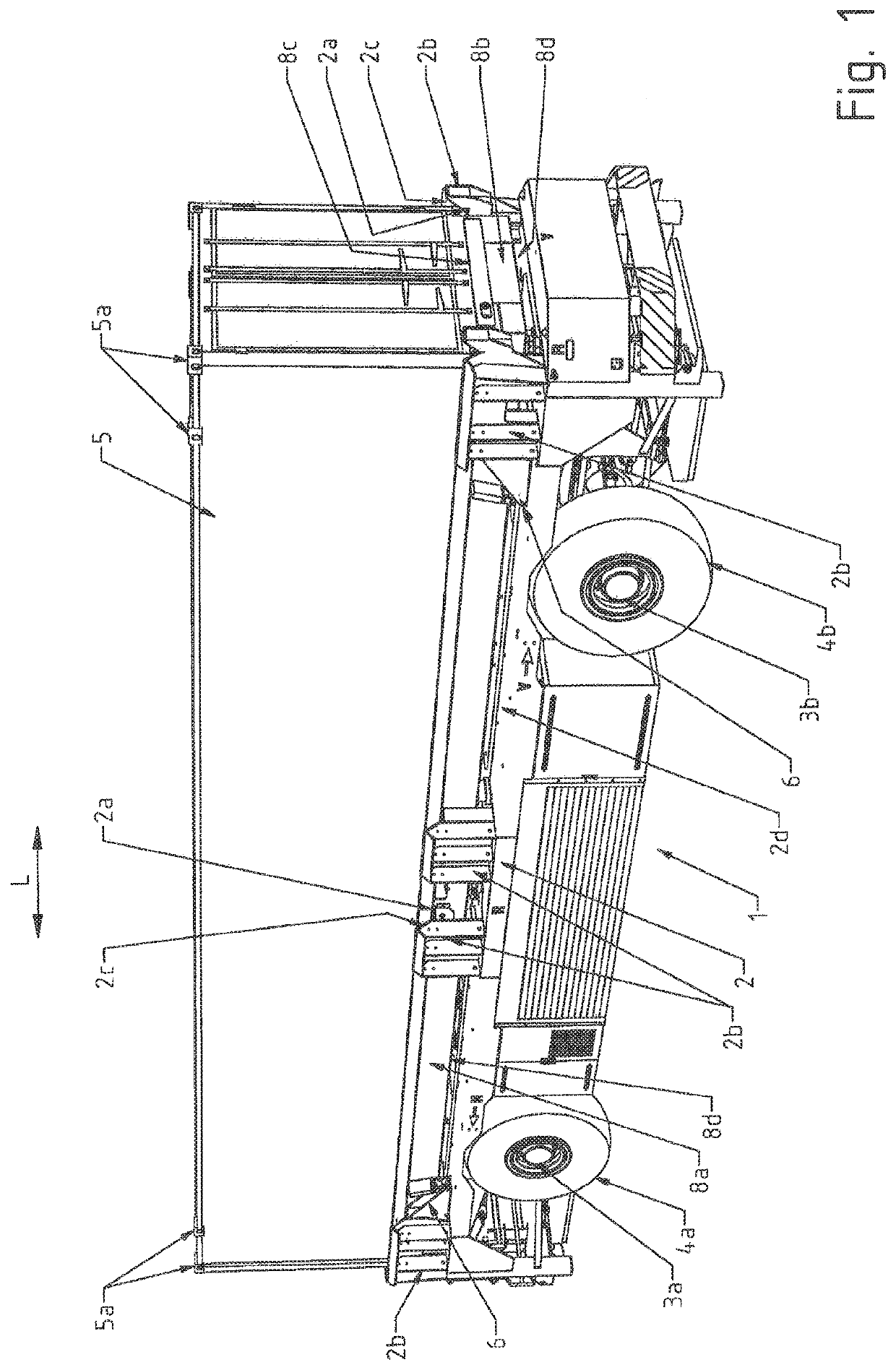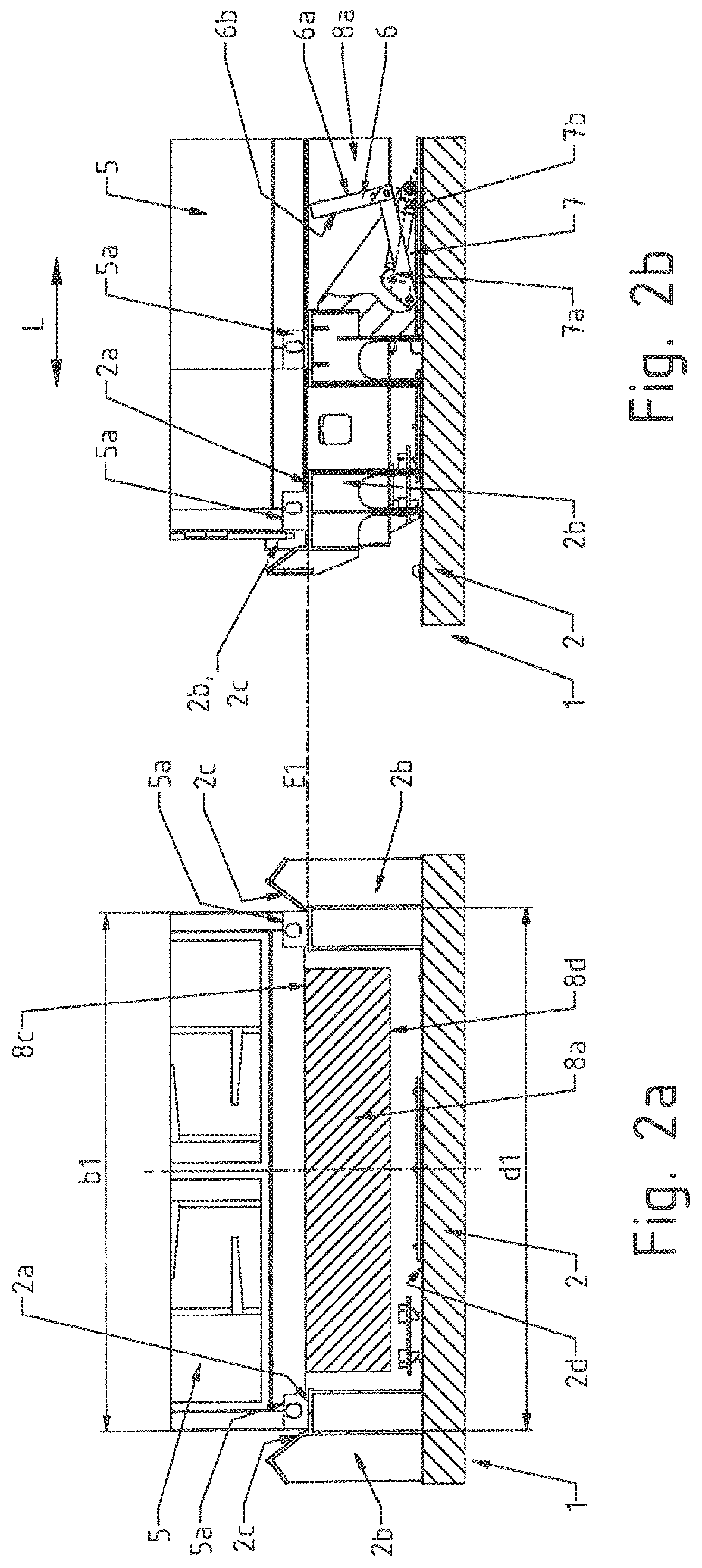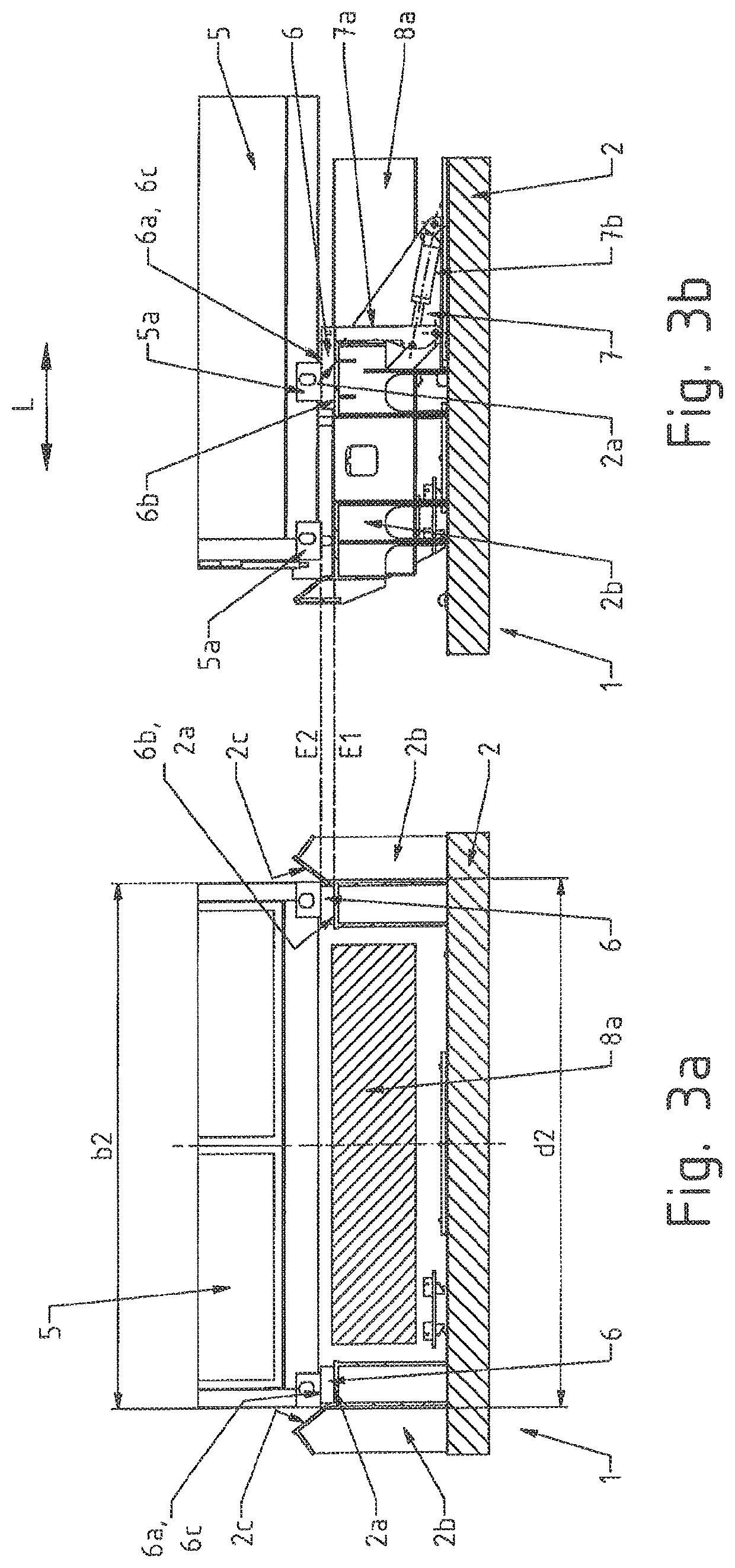Transport vehicle for containers
a technology for transporting vehicles and containers, applied in the direction of loading transportation vehicles, transportation items, load securing, etc., can solve the problems of inability to secure and stable set-down on the guide surface regions, inability to extend in an inclined manner, and inability to stabilize the wide-body container. , to achieve the effect of easy adaptation
- Summary
- Abstract
- Description
- Claims
- Application Information
AI Technical Summary
Benefits of technology
Problems solved by technology
Method used
Image
Examples
Embodiment Construction
[0029]FIG. 1 shows a perspective view of a floor-bound transport vehicle 1 for containers 5, in particular ISO-containers and wide-body containers, which is designed in the manner of an AGV, able to be operated in a fully automated driverless manner, and in particular having no driver's cabin. However, the transport vehicle 1 can also be operated manually or in a semi-automated manner and for this purpose can have a driver's cabin. The transport vehicle 1 designed as a four-wheeled vehicle, comprises a vehicle frame 2 on which, on a common front axle 3a, two front wheels 4a and, on a common rear axle 3b, two rear wheels 4b are mounted. The four wheels 4a, 4b are provided with a tire arrangement which is preferably an air-filled rubber tire arrangement in the sense of tires. By means of the wheels 4a the floor-bound transport vehicle 1 can travel freely and therefore in a non-rail-bound manner.
[0030]Furthermore, the transport vehicle 1 comprises a drive unit which substantially consi...
PUM
 Login to View More
Login to View More Abstract
Description
Claims
Application Information
 Login to View More
Login to View More - R&D
- Intellectual Property
- Life Sciences
- Materials
- Tech Scout
- Unparalleled Data Quality
- Higher Quality Content
- 60% Fewer Hallucinations
Browse by: Latest US Patents, China's latest patents, Technical Efficacy Thesaurus, Application Domain, Technology Topic, Popular Technical Reports.
© 2025 PatSnap. All rights reserved.Legal|Privacy policy|Modern Slavery Act Transparency Statement|Sitemap|About US| Contact US: help@patsnap.com



